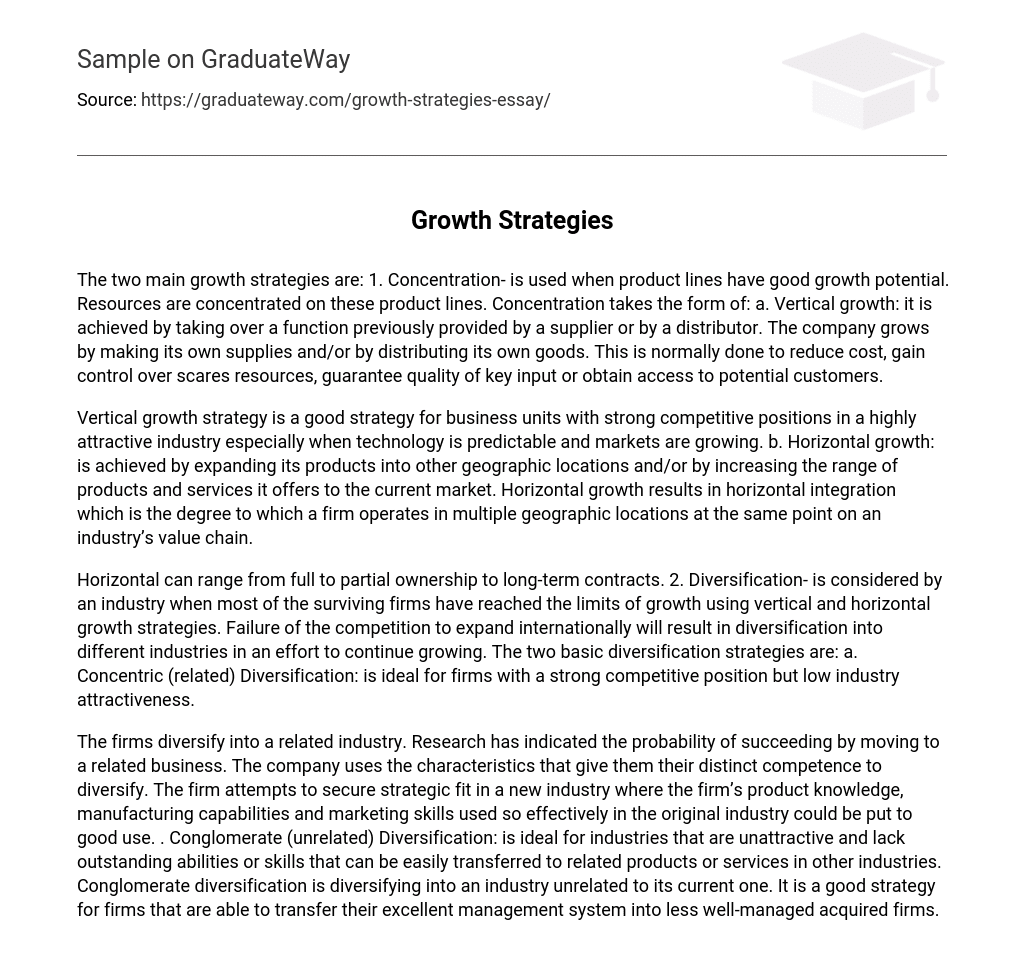The two main growth strategies are: 1. Concentration- is used when product lines have good growth potential. Resources are concentrated on these product lines. Concentration takes the form of: a. Vertical growth: it is achieved by taking over a function previously provided by a supplier or by a distributor. The company grows by making its own supplies and/or by distributing its own goods. This is normally done to reduce cost, gain control over scares resources, guarantee quality of key input or obtain access to potential customers.
Vertical growth strategy is a good strategy for business units with strong competitive positions in a highly attractive industry especially when technology is predictable and markets are growing. b. Horizontal growth: is achieved by expanding its products into other geographic locations and/or by increasing the range of products and services it offers to the current market. Horizontal growth results in horizontal integration which is the degree to which a firm operates in multiple geographic locations at the same point on an industry’s value chain.
Horizontal can range from full to partial ownership to long-term contracts. 2. Diversification- is considered by an industry when most of the surviving firms have reached the limits of growth using vertical and horizontal growth strategies. Failure of the competition to expand internationally will result in diversification into different industries in an effort to continue growing. The two basic diversification strategies are: a. Concentric (related) Diversification: is ideal for firms with a strong competitive position but low industry attractiveness.
The firms diversify into a related industry. Research has indicated the probability of succeeding by moving to a related business. The company uses the characteristics that give them their distinct competence to diversify. The firm attempts to secure strategic fit in a new industry where the firm’s product knowledge, manufacturing capabilities and marketing skills used so effectively in the original industry could be put to good use. . Conglomerate (unrelated) Diversification: is ideal for industries that are unattractive and lack outstanding abilities or skills that can be easily transferred to related products or services in other industries. Conglomerate diversification is diversifying into an industry unrelated to its current one. It is a good strategy for firms that are able to transfer their excellent management system into less well-managed acquired firms.





